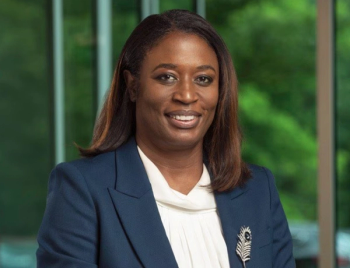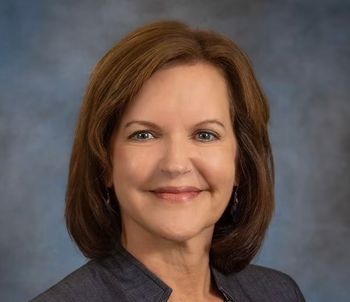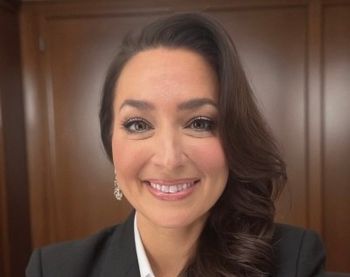
Children’s hospitals face complex challenges dealing with disasters
Pediatric hospitals deal with different factors in weather-related events and other emergencies. Terri Wilson of the Children’s Hospital Association talks about the challenges and the need for more planning and support.
From wildfires to hurricanes, hospitals encounter daunting challenges in preparing for climate-related disasters and caring for patients during emergencies.
Those challenges are magnified in some ways for children’s hospitals, who must navigate supply interruptions and ensure they are able to communicate with family members in making decisions on care. Leaders of pediatric hospitals say that disaster planning doesn’t always factor their unique needs into account, and pediatric facilities need more attention in emergency preparation and response.
Terri Wilson, vice president of pharmacy of the Children’s Hospital Association, tells Chief Healthcare Executive® that there is room to improve emergency planning to account for the needs of pediatric patients and providers.
“Kids aren't little adults,” she says. “And so when we plan for these emergencies, we can't just take an adult strategy and make it smaller. If we use big data to drive any predictive work or mitigation work, kids will be left out. And so we need to plan for the unique needs of kids and kids hospitals, preemptively, but also intentionally focused on the needs of kids and kids’ hospitals.”
Children’s hospitals have been focusing more on disaster planning, even before the emergence of the COVID-19 pandemic, Wilson says. And they’re getting plenty of practice in dealing with climate emergencies.
Children’s Hospital Los Angeles had
“As sure as we plan for one disruption, a different one will be next,” Wilson says. “So really working to be sure that they have mitigation strategies in place, that they know what alternate drugs they would use, that they have alternate suppliers and pathways, etc., I think is planning that they are, unfortunately becoming very good at.”
Unique challenges
Hospitals need to plan carefully and ensure they have sufficient medical supplies ahead of a natural disaster, but children’s hospitals need supplies and equipment that can accommodate a wide spectrum of patients of different sizes.
They need tourniquets and syringes for babies that may weigh less than a pound and teenagers that may be the size of adults.
Children’s hospitals also face different obstacles in ensuring they have an adequate supply of medications in disasters and potential supply chain interruptions.
“A child's metabolism is not just that of a small adult. So the way they utilize drugs is different,” Wilson says.
Pediatric hospitals have to compound medications more often than general acute care hospitals. If there’s a shortage of pharmaceutical supplies, “you have to compound from something different,” Wilson says.
“It doesn't just change the administration. It changes the preparation, the selection … and then the administration,” she says. “So I think it's just more complex for kids and kids hospitals.”
For children’s hospitals, contingency planning in emergencies also involves making sure that they are accounting for family members.
Parents or loved ones regularly stay with their kids in the hospital, so planning needs to include family members. Children’s hospitals also need to be able to have parents available to make medical decisions, or to help explain what’s happening in treatment.
Pediatric hospitals also differ from adult hospitals in other basic ways that may not be expected. A children’s hospital uses about twice as much laundry and linens as an adult hospital, because they have family members staying with patients.
“There's a lot of challenges that are unique to kids’ hospitals and pediatric hospitals,” Wilson says.
Better access to supplies
The Children’s Hospital Association recently developed
The association also points to the need to boost investments to increase the pediatric workforce, including trained mental health clinicians. The group also points to the need to ensure sufficient access to mental health services in public health emergencies and disasters.
But pediatric hospitals face different obstacles. Children’s hospitals aren’t able to utilize staffing agencies or traveling staff as much as adult hospitals, Wilson says.
“Not all of those types of traveling and floating clinicians are pediatric-trained and really able to come into a facility and take care of all kids,” she says.
The federal government must do more to ensure there are healthcare supplies for children’s hospitals, Wilson says. The association says the Strategic National Stockpile should have “age-appropriate delivery formulations, equipment and related supplies that meet children’s needs.”
“We definitely need bolstered medical countermeasure responses, so that there's access to pediatric medical supplies and equipment within the Strategic National Stockpile,” Wilson says. “So again, big data drives what's included in those things often, and so that will drive adult care, but we need to be sure that that exists for pediatrics as well.”
Wilson argues for the need to bring greater attention to pediatric hospitals in planning for weather-related emergencies and other disruptions.
She understands how planning would naturally be skewed to adults, since most patients in hospitals are adults, and often older adults. But policymakers and emergency management officials need to think about children’s hospitals.
“Any of these disasters simply further highlight sometimes how that inequity can happen, how an adult-focused healthcare system can receive more awareness, more treatment, more action than a pediatric one,” she says.
Leaders of children’s hospitals need to be proactive about communicating with local and state agencies about their needs. Ideally, hospitals should be building relationships with community leaders and have well-designed plans before disaster strikes.
Children’s hospitals can also look to their peers, especially those providers that have more experience in dealing with weather-related emergencies.
“If you're in a location in the Midwest that's not going to be prone to wildfires, still take that time to collaborate with your peers and learn … what were the pitfalls, what were the wins? What could I take away in my area for my potential disasters? I think that the collaboration with like-minded organizations is always a win and is a way to be stronger for the next time,” Wilson says.




